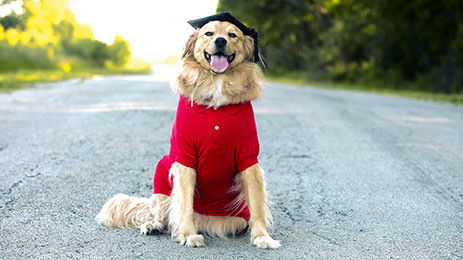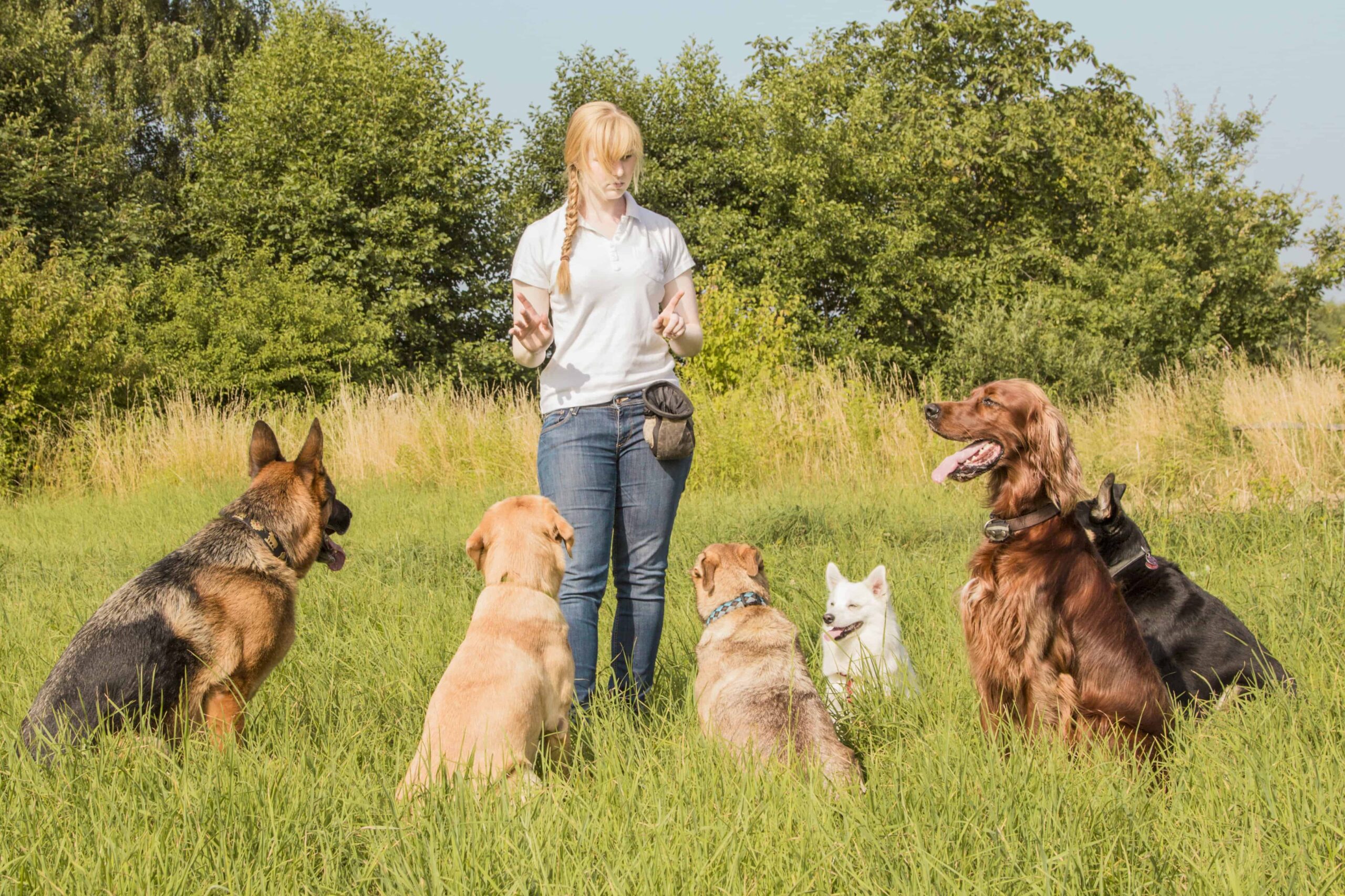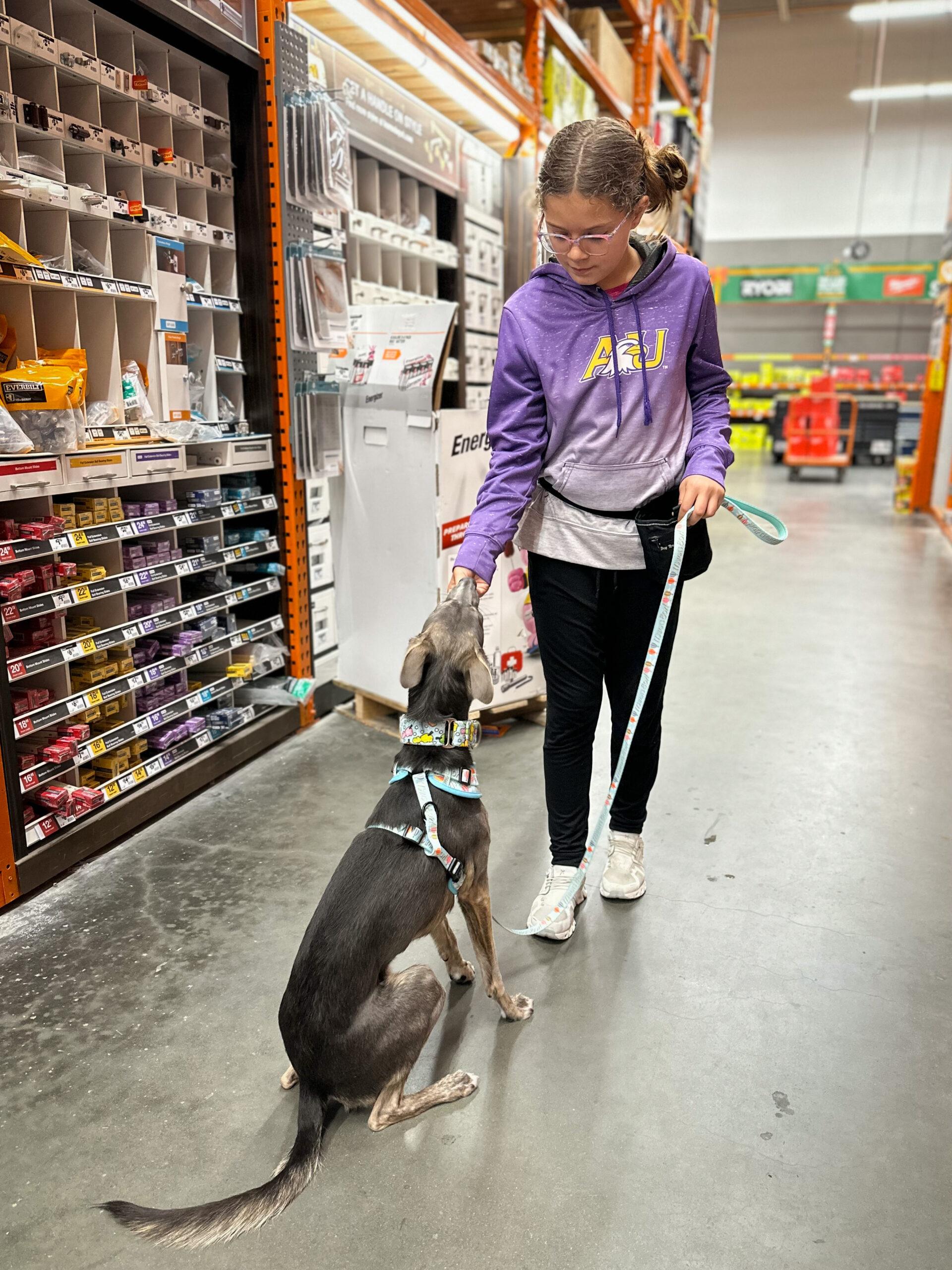The Advantages of Early Dog Training for a Mannerly Pet
The Advantages of Early Dog Training for a Mannerly Pet
Blog Article
Essential Tips for Successful Dog Training: An Overview for Pet Dog Owners
Efficient canine training is a diverse procedure that needs a strategic technique tailored to both the pet's temperament and the proprietor's purposes. Recognizing how to navigate these barriers can substantially enhance the training experience, ultimately changing the relationship between owner and pet dog.
Recognizing Dog Actions
Comprehending pet dog habits is crucial for efficient training and fostering an unified connection in between dogs and their owners. Pet dogs interact largely through body movement, articulations, and actions, making it critical for owners to translate these signals properly. Acknowledging a pet's posture, tail setting, and ear alignment can provide insights right into its emotion. As an example, a wagging tail does not always show joy; it can also indicate exhilaration or anxiety.

Socializing plays a substantial function in pet dog behavior; exposure to numerous settings, individuals, and other animals can dramatically influence a pet dog's character. Additionally, factors such as type features and private character should lead training techniques, as some breeds might have details behavioral traits that demand customized methods. By understanding these components, proprietors can develop an encouraging atmosphere that urges positive actions, bring about successful training outcomes and a much deeper bond with their pet dogs.
Developing Constant Commands
Reliable communication with your canine begins with establishing consistent commands. This foundational aspect of training is essential for promoting understanding between you and your pet dog. Consistency in the commands you use makes sure that your pet dog can reliably associate specific words or phrases with the desired behaviors.
When picking commands, pick clear, distinct words that are simple to state and separate from each other. Avoid making use of similar-sounding commands that might perplex your pet. For example, making use of "sit" and "stay" is appropriate, but "sit" and "struck" can result in misconceptions.
Furthermore, maintain the very same tone and quantity for each and every command. Pets are sensitive to singing hints, so differing your tone can create confusion.
It is equally essential to ensure that all relative are on the same web page regarding the commands used. A united front in command usage will certainly prevent mixed signals and enhance the knowing process.
Favorable Reinforcement Methods
The power of positive support in pet dog training lies in its capability to motivate preferred habits through incentives and appreciation. This strategy is grounded in the concept that actions complied with by desirable end results are most likely to be duplicated. By integrating positive support right into your training routine, you can properly shape your pet dog's actions in a positive way.
To apply favorable reinforcement, it's vital to determine what inspires your pet, whether it be treats, toys, or spoken praise. When your pet executes a wanted activity, such as sitting on command, instantly compensate them with a reward or affection. This organization between the command and the positive end result strengthens their understanding.
It's essential to timing the rewards correctly; providing the support within seconds of the preferred actions helps your pet dog make the link like it (dog training). Additionally, consistency is crucial-- make sure that all member of the family use the exact same commands and reward systems to prevent confusion

Progressively, you can decrease the frequency of treats as your pet learns the behavior, transitioning to praise or intermittent benefits. This approach not just cultivates a solid bond in between you and your pet yet additionally advertises a positive knowing environment, making educating an enjoyable experience for both.
Socialization and Communication
Continually subjecting your pet to a selection of settings, individuals, and various other pets is crucial for their social development. Socialization ought to begin early, ideally throughout the critical home window of 3 to 14 weeks, when pups are most responsive to brand-new experiences. Nonetheless, older pet dogs can likewise gain from continuous socialization efforts.
Introduce your pet dog to various settings, such as parks, pet-friendly shops, and metropolitan locations. This direct exposure assists them adjust to various stimulations, minimizing stress and anxiety and worry actions. Motivate positive communications with various other canines and people, guaranteeing that these encounters are safe and regulated to cultivate self-confidence.
Use organized playdates with courteous dogs, as this can boost your canine's social abilities and instruct them appropriate habits. Obedience classes and training sessions likewise provide exceptional opportunities for socializing, allowing your pet dog to interact with others in a monitored environment.
Screen your dog's body movement during interactions, as this will certainly aid you assess their comfort degree. Progressively boost exposure to even more challenging scenarios while making sure that each experience is positive. A well-socialized pet is most likely to exhibit balanced actions, making them a delight to have in any kind of setup.
Addressing Typical Training Obstacles
Every dog proprietor will run into training difficulties at some time, no matter their pet's age or socializing degree. Recognizing common problems such as stubbornness, distractions, and terror can assist in creating efficient approaches for improvement.

Progressively present diversions as the pet dog ends up being much more competent in commands. Short, frequent training sessions are also efficient in preserving interest.
Fearfulness can prevent a pet dog's discovering process. Gradual desensitization to the resource of anxiety, coupled with positive support, can assist minimize anxiety. Perseverance is critical; never ever force a pet right into a situation that creates distress, as this might intensify the concern.
Eventually, understanding and dealing with these usual difficulties with a structured strategy will cultivate a much more productive training experience, reinforcing the bond in between dog and proprietor while promoting reliable knowing.
Verdict
In summary, effective pet dog training relies on a detailed understanding of canine behavior, the facility of consistent commands, and the application of favorable reinforcement methods. Socializing plays a vital function in developing well-adjusted animals, while dealing with typical training challenges calls for perseverance and flexibility. By applying these important strategies, pet proprietors can promote a strong bond with their canines and promote preferable habits, ultimately leading to a harmonious relationship in between humans and their canine buddies.
Recognizing canine habits is crucial for effective training and promoting an unified partnership between canines and their owners.Socializing plays a substantial role in canine habits; direct exposure to numerous environments, people, and other animals can dramatically influence a dog's temperament.The power of positive reinforcement in pet dog training exists in its capacity to urge wanted behaviors through benefits and praise. By integrating favorable support right into your training program, you can properly shape your dog's behavior in a constructive way.
In recap, effective pet training counts on a More Bonuses comprehensive understanding of canine behavior, the establishment of constant commands, and the application of favorable support strategies.
Report this page